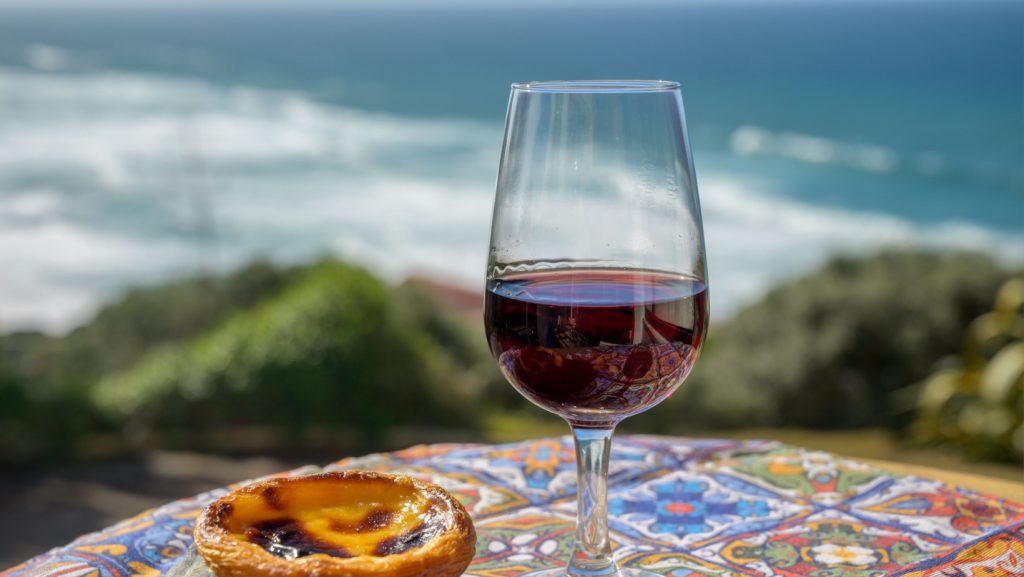Lisbon, Portugal, is hugely popular with American tourists and immigrants, and it’s deserving of all the love it gets. Portugal’s capital city is stunning — pastel buildings, cobblestone streets, river views. It’s a modern city with historic vibes, great culture, and livability. If you got off the plane and decided you’d found your new home, no one could blame you.
But that popularity does come with trade-offs, among them higher rent, heavier crowds, and an undefinable lack of “undiscoveredness” in some areas. American immigrants looking for smaller towns, quieter settings, and more affordable living can find those things all over Portugal (some even with relatively quick, easy access to Lisbon when needed). The headliner is great, but don’t forget about the supporting characters — here are just 10 of many non-Lisbon options in Portugal.

Ericeira
Ericeira is definitely more than a surfing town, but it definitely is a surfing town — it is, in fact, the only World Surfing Reserve in Europe. It’s also a laid-back fishing village about 45 minutes from Lisbon, with a lively expat community, a charming old town, and a slower pace than you’ll find in Lisbon. If you don’t mind cobbled streets lined with whitewashed houses and ocean-view cafes, fresh seafood pulled straight from the Atlantic, and housing prices lower than Lisbon, you’ll be able to get by in Ericeira. While, as you might imagine, the town does swell a bit with tourists in summer, the rest of the year it’s breezy and quiet — great for a charming small town with easy city access.
Cascais
Cascais is often called the “Portuguese Riviera,” and with good reason. It was a royal summer residence from King Luís I of to King Carlos I, and while it doesn’t retain that royal-retreat opulence, it still brings a touch of glamour to everyday living. It offers beaches, marinas, golf courses, and seaside promenades, and culture and nightlife are just a half-hour train ride away in Lisbon. New arrivals tend to like Cascais for its newcomer friendliness — English is spoken widely, international schools are plentiful, and housing options range from modern condos to restored mansions. It’s not the cheapest option in Portugal, but it’s more reasonable than Lisbon and residents certainly find they get what they’re paying for.
Setúbal
Setúbal is a port city south of Lisbon famous for fresh fish, Moscatel wine, and the gorgeous Arrábida Natural Park right next door with white sand beaches and Caribbean-esque turquoise waters. It’s a working city — not a resort town — so on the one hand, it doesn’t have all the polish of Cascais, but on the other hand, it doesn’t have all the polish of Cascais. Setúbal offers a more authentically Portuguese experience, with bustling markets, affordable housing, and Portugal’s famously (and infamously) relaxed pace of living. Newcomers can expect to be surrounded by Portuguese neighbors with not a single English-language street sign in sight, so it’s great for anyone who wants to fully integrate into their new community.
Vila do Conde
Northward along the coast is Vila do Conde. It’s a place for long, sandy beaches, medieval monasteries, and a pace of living that more or less syncs with the tides. Vila do Conde is a center for historical architecture, artisanal goods, and festivals celebrating everything from religious occasions to film to agricultural activities. It’s about 40 minutes by car or metro from Porto, so it’s close enough for commuting, international travel, or nightlife, but far enough away that you’re going to see reasonable housing prices and only a reasonable number of tourists.
Póvoa de Varzim
Póvoa de Varzim is a northerly neighbor to Vila do Conde and offers a little bit of that same coastal charm but with more bustle — casinos, festivals, and a boardwalk basically built for gelato and people-watching. Summers do tend to buzz with tourists (Portuguese and otherwise), but it never tips all the way into the “overcrowded” feeling of other tourist-friendly spots in the Algarve region. Póvoa de Varzim has a comfortable balance of deep cultural traditions and modern energy in its shops, schools, and infrastructure, for a pleasant, affordable sweet spot between “sleepy seaside village” and “bustling city.”
Foz do Douro
Foz do Douro isn’t technically a separate city from Porto, but it is one of the city’s more desirable neighborhoods — it’s still one of the priciest areas to live in northern Portugal, but for the money, you get a combination of big-city polish and seaside-town ease. Foz do Douro is a spot for immigrants who want a premium lifestyle and are willing to pay for it, for safety, gorgeous scenery, a quick commute into downtown Porto, and the occasional chic wine bar or trendy cafe for drinks while you gaze at the sunset over the ocean.
Matosinhos
Also near Porto is Matosinhos, for a more affordable, down-to-earth alternative to Foz do Douro. It’s a hub for industry and logistics, but it’s also home to one of the best urban beaches and some of the best seafood restaurants (according to locals) in the country. Even with the popularity of its golden beaches in the summer — and those beaches are popular — the lively markets and out-of-the-way restaurants make it as much a hometown as it is a beach town. Matosinhos reads more like its own city than a sister town to a big city, offering a sense of authenticity and coastal comfort with easy access to Porto.
Gaia
Gaia sits across the Douro River from Porto and a world-famous home to Porto’s eponymous wine — Gaia’s port wine cellars are legendary. But beyond its stockpiles of fortified wine, it’s also a sprawling coastal city bordered by water on two sides, with beaches and markets and a housing market that can be much more affordable than Porto. You get riverside and seaside neighborhoods, a view of the Porto skyline, and a quick commute into the city while enjoying a more friendly, less touristy locale. And some of the world’s best wine, in quantity, just down the road.

Aveiro
Aveiro is sometimes called the “Venice of Portugal” for its canals, although the Art Nouveau architecture and flat-bottomed moliceiro boats are all its own. And it’s more than a pretty face — it’s also home to the Universidade de Aveiro, with all the culture, activities, youthful energy, and affordable living that frequently come with a college town. It also offers beautiful beaches, particularly Praia Costa Nova with its iconic, candy-striped, Instagram-worthy houses. Aveiro is just big enough for city living while being small enough to feel comfortable and personal, and active enough to keep you interested while being relaxed enough to enjoy beautiful coastal living.
Tavira
Down south in the Algarve, Tavira is one of the region’s most charming towns. It’s almost aggressively charming — cobbled streets, Roman bridges, and a historic center that feels untouched by time (and tourism). While many of the bigger cities in the Algarve feel overrun in the summer, Tavira maintains a quieter, more authentic quality of life. It’s surrounded by nature reserves, with ferry access to Ilha de Tavira — a long, sandy island perfect for beach days without crowds. It’s also less internationalized than many Algarve towns to the west, so you can expect Portuguese language spoken in the streets and Portuguese prices in the housing market. Immigrants looking for a beautiful setting, an easier pace of living, and a more traditional feel should keep Tavira on their list.









